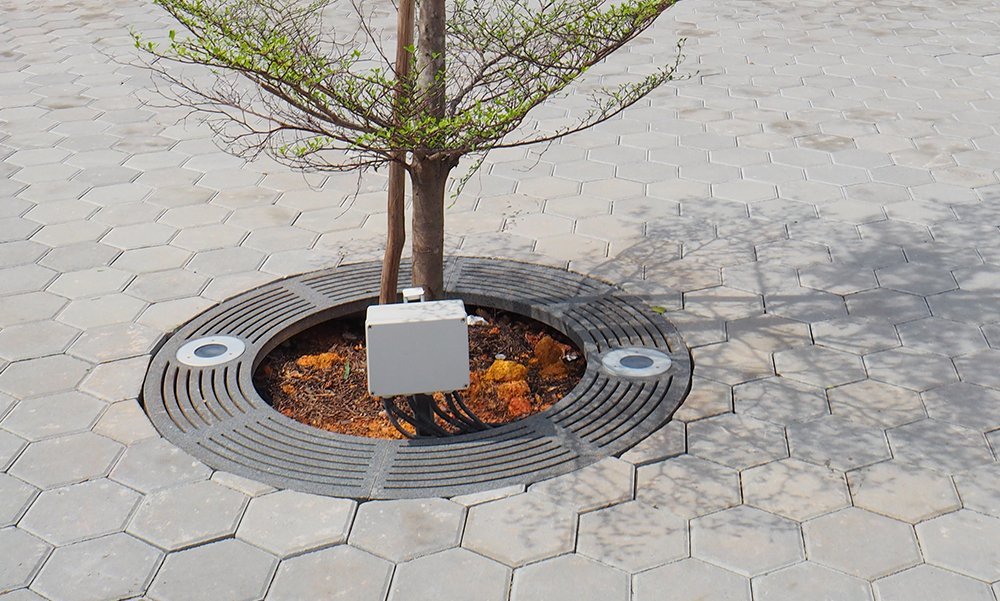Urban landscaping is the crucial process of visually and structurally integrating components of urban settlements, including buildings, roads, spaces, and other elements.
Many towns and cities across the world started without concrete plans with any efforts at planning coming long after populations had settled. Maintaining such towns and cities is thus a big challenge for urban planners.
Trees are an integral part of any urban landscape. In most cases, people clear trees to pave the way for buildings and infrastructure, only to realize the critical part trees play. Trees improve the livability of towns and cities in different ways.
It is for these reasons that every urban authority has a plan on planting and maintaining them using landscaping techniques such as tree grates.
The Place of Trees in Urban Landscaping
Planting trees around cities has an aesthetic impact on the surrounding. More importantly, trees help improve air quality by absorbing carbon dioxide from the air. Trees also remove pollutants such as carbon monoxide, cadmium, Sulphur dioxide, nitrogen oxides, and particulates, nickel to improve the health and wellbeing of urban residents.
Other advantages of adding trees to urban landscaping include the prevention of soil erosion, managing stormwater, cooling effect by reducing the urban “heat island” effect, and increasing urban biodiversity. Planting trees also increases property value, which is a major advantage for urban authorities, homeowners, and other real estate investors.
Tree Grates for Protection of Trees
While the planting of trees in urban landscapes is easy, the harder task for authorities is to maintain these trees in the best condition. Natural forests are the ideal places for most plants, and thus urban settings present adverse circumstances for trees.
Among the challenges trees face in this harsh environment include the exposure to wind and de-icing salt, paved surrounds which limit growth, microclimate temperatures, vandalism leading to damage of roots, branches and trunks, exposure to pollution and much more.
Tree grates come in handy to protect trees in these tough circumstances. These are essential landscaping features that cover the ground around a tree’s trunk. Grates come in different styles and materials, including natural stone, steel, cast iron, and plastic.
By covering the tree root system, these fittings allow the tree to grow naturally and without exposure to foot traffic on the pavement. The installations also protect roots against extreme exposure to high temperatures, de-icing salts, and other risks that would make the growth of urban trees impossible. In combination, all these functions play a critical role in promoting healthy tree growth.
Tree Grating Improves Aesthetics in Urban Landscaping
Urban developers have the unenviable task of choosing the right tree species for urban landscapes and ensuring these trees grow. More importantly, they have to maintain the trees in such a way that they naturally blend into the urban landscape. It is a tough task considering many people don’t appreciate the role trees play.
Using grates around the trees is a smart way of making people notice these important components of the landscaping. The best grating systems are aesthetically appealing, and they easily blend in with the environment making them hard to miss.
While most people walk by trees without a second glance, adding a beautiful grating system can make all the difference. It’s easy to customize cast iron tree grates to suit any landscaping idea you have in mind. You can choose magnificent patterns for the grates, which will make people take a second look.
People love beautiful things, and if you use captivating patterns or shapes for your urban grates, you will add a touch of style to the landscaping. Better still, these installations help people to notice trees around them and appreciate the place of trees in their environment.
Grating for Healthy Growth of Trees
While trees look magnificent in an urban landscape, they go through a lot of difficulties to thrive. In most urban areas, the levels of pollution have grown over the last few years. There are also effects of microclimates in urban areas, high temperatures, among other challenges.
Tree grating helps in urban landscaping by reducing litter build-up around the trees. This means tree roots can access as much moisture as they need, and the air circulation is not impeded. People in urban areas will readily throw trash around trees, and some of these items are toxic.
By installing concrete tree grates, you ensure that such harmful trash doesn’t slip through into the soil surrounding the roots. These grates also help with the suppression of weed growth, and this makes maintenance easier for urban landscapers.
Final Thoughts
Using trees for urban landscaping is tough because of the harsh environment. However, tree grating makes a big difference by protecting the trees, promoting their growth, and giving their surroundings a much-needed makeover.
Tree grates might look like ordinary landscaping features, yet they play a critical role in boosting tree growth. In turn, the urban population benefits immensely from these healthy trees.

